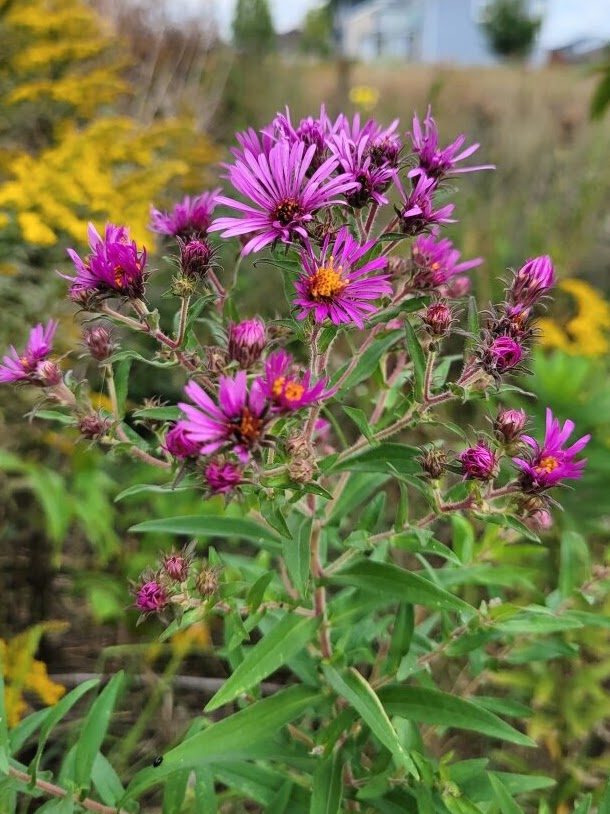Plant of the Week: New England Aster
posted
Written by: Engineering Conservation Crew
When do you think of when you think of fall? Leaves turning color and crisp mornings? Pumpkin spice lattes and curling up with your pet? And yet, the blooming season is far from over. The abundant plants that bloom in the fall hardly make things seem like these cozy things are right around the corner.This plant in particular is called New England aster. It is part of a large family and it’s cousins include sky blue aster, big-leaved aster, heart-shaped aster, and swamp aster – each suited to slightly different habitats. Asters generally have vivid hues of blue, purple, and pink that contrast spectacularly with the yellows of the goldenrod family. New England aster flowers come in various shades of pink and purple and are visited by a large range of bee species, butterflies, skippers, and other pollinating insects.This species of aster is quite the powerhouse and might need to be occasionally cut back in a small landscape setting. Outside of your yard, this plant can thrive in a wide variety of conditions. From full sun to shade, from dry soils to wet soils, it can hold its own in a competitive setting, even making appearances outside of areas managed for native vegetation and out-bullying invasive plant species. New England aster can even handle temporary periods of standing water, which make it perfect for stormwater land. Its abundance and wide range make it the meat and potatoes for insects stocking up on floral resources for winter dormancy or migration.This fine specimen was found on the slope of the Saturn Dr Ponds.
Each week during the growing season, the Engineering Division focuses in on a Plant of the Week to raise awareness of different plants in the field that benefit our environment. The Engineering crews in the field tasked with conservation share expert insight on these plants and their benefits each week in a creative way!

